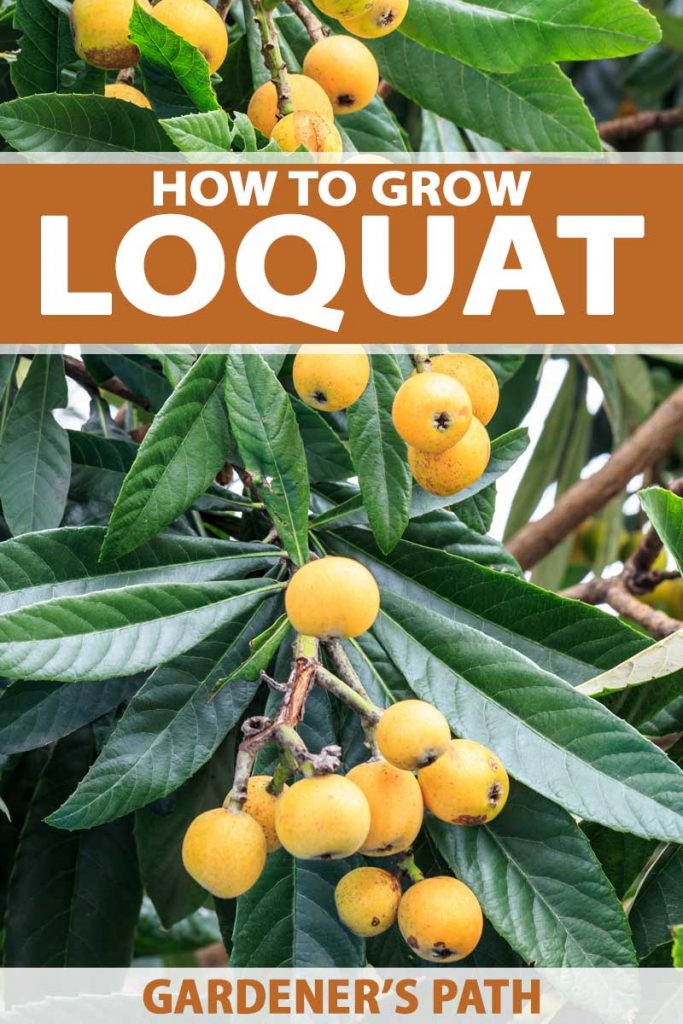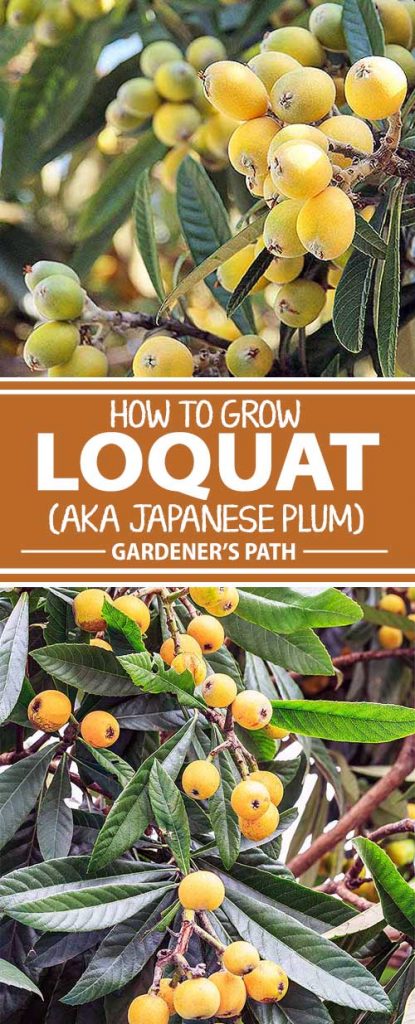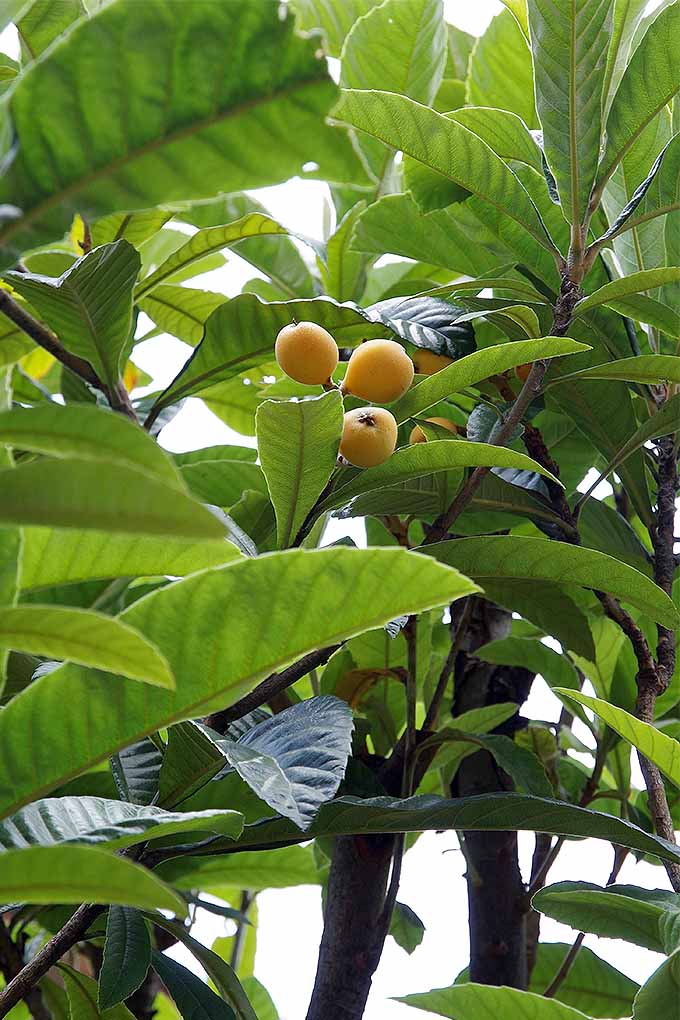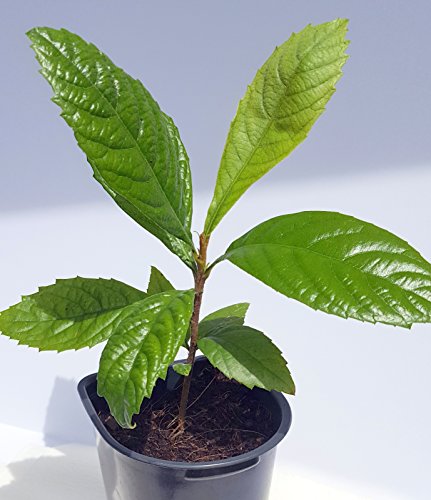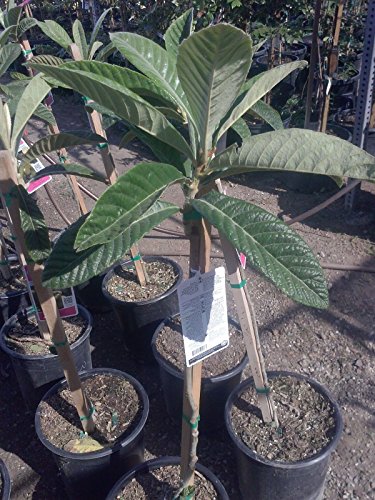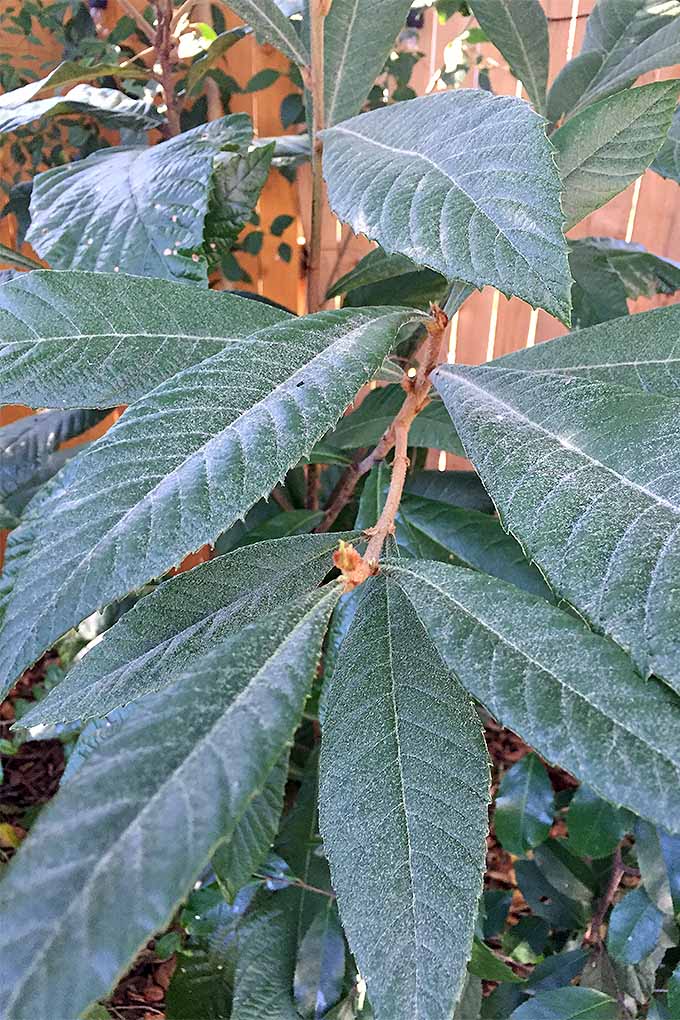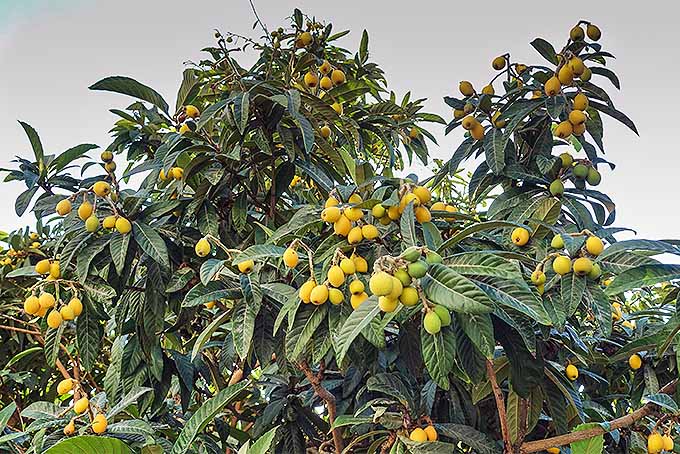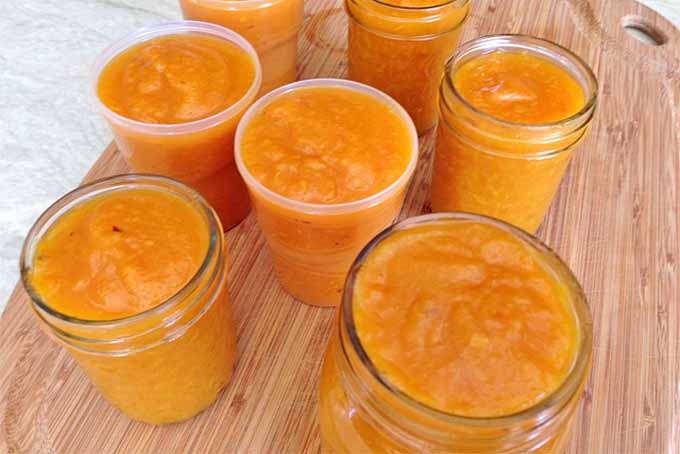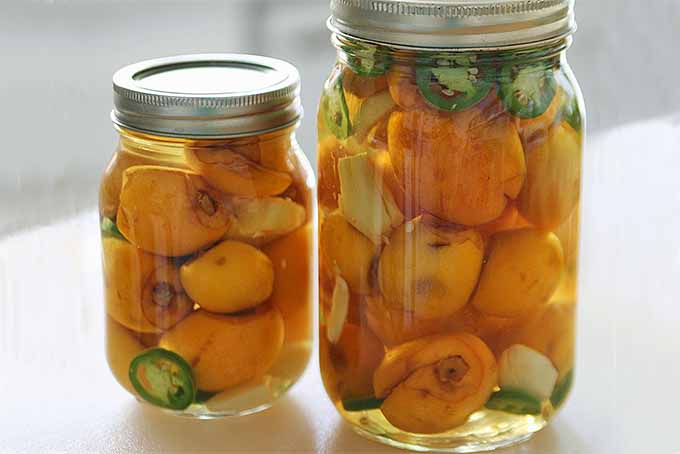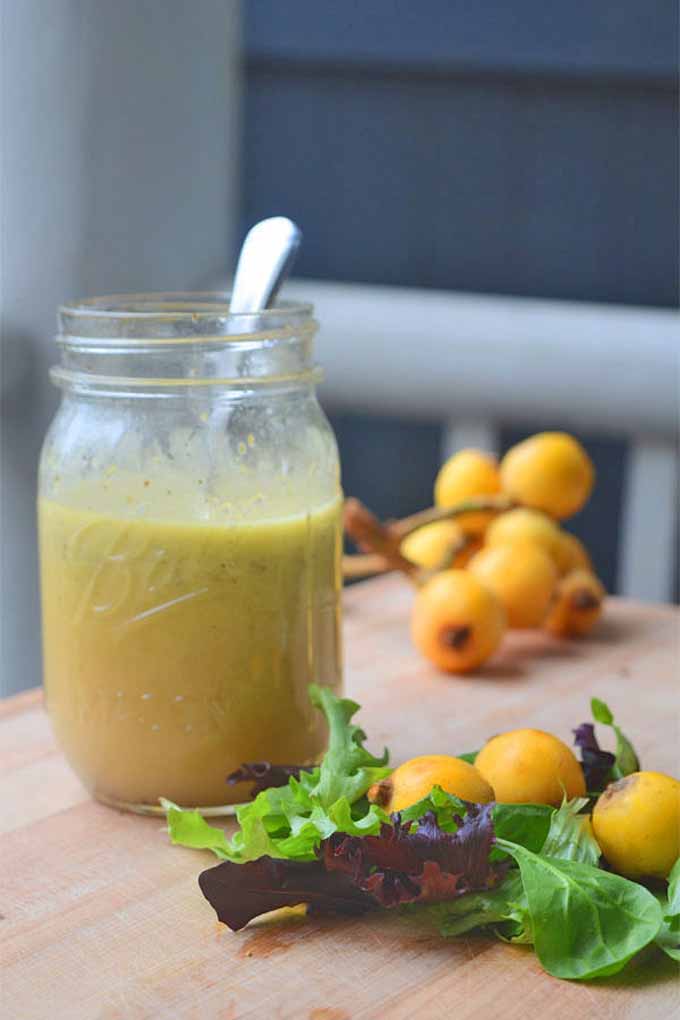Native to China, carefully cultivated in Japan for a thousand years or more, and beloved in the American South, Eriobotrya japonica is an evergreen tree that can grow to 25 feet tall and spread 15 to 20 wide. Also known as Japanese plum or Japanese medlar, loquat produces large, dark green leaves that are often used in floral arrangements. Younger leaves are downy, whereas older leaves become more leathery. We link to vendors to help you find relevant products. If you buy from one of our links, we may earn a commission. The yellow, orange, or white flesh of the fruit can be sweet or slightly acidic. Their sweet-tart flavor has been described variously as being similar to plum, lemon, apricot, cherry, grape, or some combination thereof. My kids think they taste like a slightly sour plum. I detect a hint of cherry in their flavor, too.
The fruit is delicious fresh, and that’s how our family enjoys it – straight off the tree. We usually don’t have the patience to wait for it to be cooked up! But they are often preserved in jellies or jams, and we have occasionally had the patience to make a cobbler. One of our neighbors sometimes makes a pie with the gifts of his tree. E. japonica is a member of the pome family and is a cousin of pears, apples, and quinces. Its produce is firm and juicy, and contains two or three large, dark brown seeds. This bushy, dense tree does well in USDA Hardiness Zones 8-10. The tree can tolerate temperatures as low as 10°F, but freezes below 27°F can kill the flowers and fruit.
Just About Anywhere Will Do
These trees grow best in full sun but will tolerate partial shade. We have one that somehow ended up as an understory tree beneath a live oak. Your best bet is to purchase a grafted seedling, and you’ll see fruit after about three years. Loquat Seedling You will receive thorough instructions with your purchase of the seedling, as well as contact information if you have further questions. ‘Big Jim’ is a well-liked cultivar for its generously sized produce. ‘Big Jim’ Loquat Grafted Tree, 3 Feet Tall You’ll get a three-foot tree in a one-gallon pot. ‘Big Jim’ is known for having a mellow, less-acidic flavor. It’s not setting any growth records, and it hasn’t given us any tasty bits, but it’s healthy and adds a nice tropical look to the garden. The trees aren’t particularly picky about their soil, as long as it drains well and isn’t saline. On the Texas A&M University website, Texas Cooperative Extension horticulturist Julian W. Sauls, Ph.D. writes, “Soil pH does not seem to matter, as the trees grow equally well in the acid soils of east Texas and the alkaline soils of north, central, and south Texas.” Other growers report having trouble getting the trees to do well in alkaline soil. E. japonica is drought tolerant but will be more productive when it gets regular water. The same goes for fertilizer. You can feed it nothing and it will do fine, but an application of 6-6-6 (NPK) fertilizer three times over the growing season will enable the tree to be more fruitful.
Savor the Flavor
Loquat fruit needs to ripen fully on the tree before you harvest it. The fruits are mature about 90 days after the flower is fully open. Loquats are fairly pest free, but can be bothered by black scale.
Bonide Neem Oil Blast these invaders off with water, or treat with neem oil such as this one from Bonide, available from Arbico Organics. You’ll know it’s harvest time when the fruit up near the stem is yellow-orange, with no green, and when it’s soft, and easily pulls off the stem.
You’ll want to harvest them as quickly as they are ready, because if they fall, they can be quite messy. However, if your yard is home to squirrels or other critters, they’ll help you with cleanup. Unfortunately, they’ll also help themselves to a good portion of on-the-tree produce, too. But E. japonica is so bountiful, there’s generally enough to go around. They are most delicious when eaten or prepared right away, which is what happens in our house. They’re gone within about 24 hours of harvest! Other gardeners have had success storing the ripe fruit in the refrigerator for up to a week. The fruit doesn’t travel well or have a long shelf life, which is why it has not become a grocery store staple. Lucky Californians can sometimes find the yellow orbs in Asian groceries. When you’ve made your harvest, it’s time to cook! Enjoy these recipes.
Loquat Freezer Jam
Loquats are high in natural pectin, so they are easy to preserve. You’ll store Gena Bell’s Loquat Freezer Jam in the freezer to keep it tasty. A few simple ingredients, cold storage, and you’ll be able to enjoy loquats any time of year. Get the recipe from Live Love Laugh Food.
Loquat Apple Crumble
For a tasty and unusual dessert, consider this Delicious Loquat Apple Crumble recipe from Peter’s Food Adventures. As members of the same family, apples and loquats get along well and pair perfectly in this easy-to-make dish.
Amy Finley’s Pickled Loquats
Amy Finley, winner of the third season of Food Network’s “The Next Food Network Star” cooking competition, shared this recipe with her friend Caron Golden of the website San Diego Foodstuff, and Golden shared it with us! After you make the pickles, you’ll have to let them sit in the refrigerator for at least five days before digging in — seven if you can stand it!
Loquat Vinaigrette Dressing
This tasty dressing comes from a Charleston, South Carolina-based food blogger who specializes in paleo cooking. Jessica recommends you use a high-quality olive oil in this dressing, which includes dijon mustard and oregano in addition to loquats. Find the recipe from Paleo Scaleo.
Tropical Delight
If you live in a region where you can grow this spectacular tree, you’ll be rewarded with not only a lovely touch of the tropics, but also with an uncommon and delicious fruit. A little sun or a lot of sun, pretty much any dirt, a little water or a lot of water — this tree is fairly easygoing. It just doesn’t like really cold temperatures. But really, who does? If you’re interested in more information about growing fruit trees, check out these guides next:
How to Grow and Care for Avocado Trees How to Prepare Fruit Trees for Winter How to Grow Beautiful and Productive Fig Trees How to Grow and Care for Olive Trees
Photos by Gretchen Heber, © Ask the Experts, LLC. ALL RIGHTS RESERVED. See our TOS for more details. Product images via Paisley Farm and Crafts, 9EzTropical, and Garden Safe. Recipes photos used with permission. Uncredited photos: Shutterstock.
